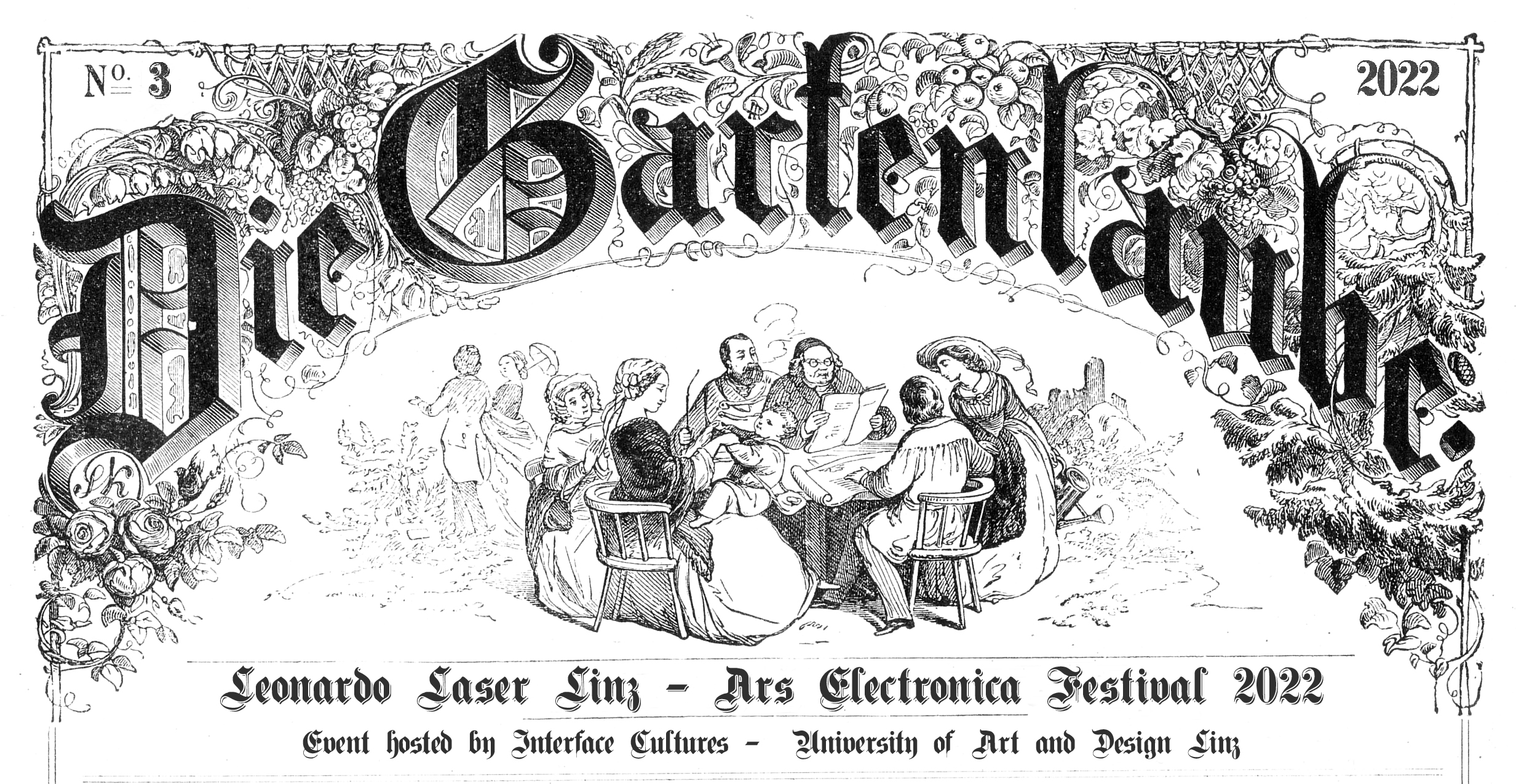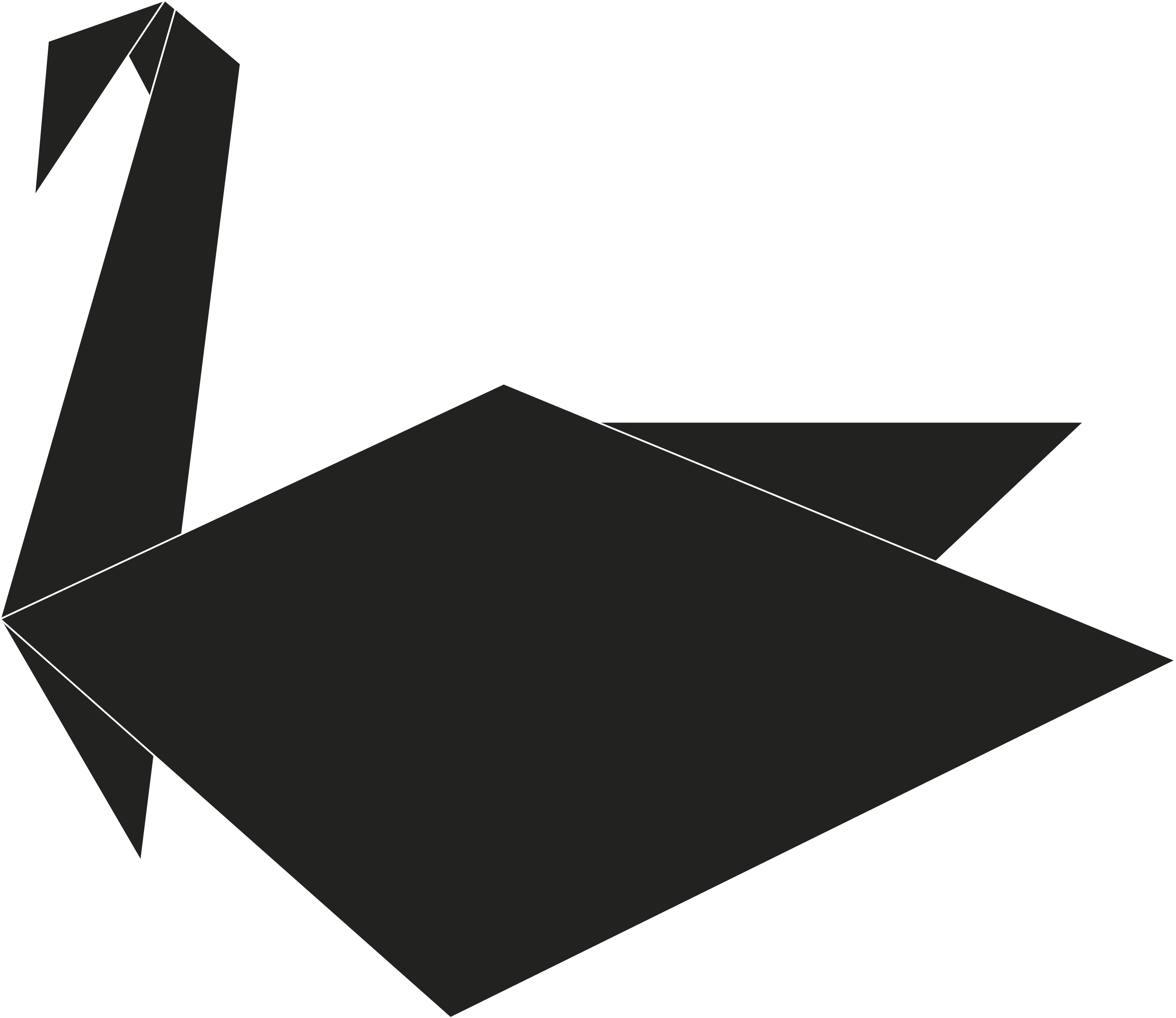Interface Cultures – Crossing the Bridge
Just as neighboring nations can develop separate cultures — in part due to forces of nature that separate them such as rivers and mountains — so art and science often present themselves as if divided into two different cultures and languages. Paradoxically, the construction of bridges, as well as other vehicles intended to facilitate communication between different cultures, were projects originally assigned to artist-scientists. But just as bridges can be built, so can they be destroyed. And indeed, up to this day it seems that there are still too many bridges to be built, as well as others more fragile that need to be reinforced.
The linguistic divide between the arts and sciences began at the end of the Enlightenment era, in the late 19th century. It was at this point that the term “science” began to be used in its narrowest sense, referring only to the “physical” or “natural” sciences. The Romantic movement of the time and its aesthetic perspective served as a counterpoint to utilitarianism and instrumental rationality through which the ideas of the Enlightenment gained theoretical legitimacy and influenced the modern industrial age. In fact, the paradigm of the arts and sciences divide has accompanied us until today, with the greatest danger of these disciplines undoubtedly lying in their differing modes of articulation.
Within artistic practices, for example, many of its most influential philosophers and theorists have made use of scientific language and terminology, often interpreting data and playing with language in ways that have only succeeded in alienating the scientific community. Thus, many contemporary works of art take on the air of something independent and esoteric. John Dewey, in his book *Art as Experience*, asserts that when the aesthetic contrasts so strongly with our common experience, it is normal that we are barely able to recognize it, making it easier for us to place it in a world apart. The reasons for this are not inherent to the subject of art and aesthetics, but to political and economic conditions. Thus, in order to strengthen our understanding of art, it would be necessary to rediscover and emphasize the extent to which aesthetic experience is consistent with the normal processes of life. Perhaps this is where our artists, through their practice, making use of new technologies as well as engaging in the critical analysis of their social and cultural impact on our environment, contribute to reinforce such bridges. These artists, in constant dialogue with others, occupy a privileged position, by nurturing and contributing to heightened communication between different disciplines, and by fostering their dissemination and social and cultural understanding.
Much of this work is carried out within universities. The academic world allows its artists to encounter a multitude of disciplines. To communicate effectively in these contexts, artists must learn the specific protocols and languages of these disciplines. The challenge, as Victoria Vesna states, is to do so without losing the intuitive and “wild” element inherent in artistic practices. This way, many contemporary artists have left aside the traditional processes of artistic production and distribution linked to conventional art markets, to make art based on the creation of their own aesthetic systems: organizing resources, media, fostering collaboration — both interdisciplinary and even interspecies, allowing all their participants to experience art in a new, questioning, responsible, sustainable, amplified and empowering way. For this reason, this year the Interface Cultures Department leaves its own comfort zone of the University of Art and Design Linz, and conceptually and physically crosses the bridge, bringing along a selection of its latest student projects right to the center of the JKU Campus. And what better occasion for this than the celebration of the 43rd edition of the international Ars Electronica Festival in Linz, a festival with a long tradition of crossing disciplines by constantly exploring the impact of art and technology on daily life and society? We strongly believe that by engaging, discussing and communicating with international festival visitors, new unexpected paths can be taken and new bridges and connections built.
Interface Cultures Faculty: Christa Sommerer, Laurent Mignonneau, Manuela Naveau, Fabricio Lamoncha, Michaela Ortner
Production / Design Team: Kevin Blackistone, Sara Koniarek, Juan Pablo Linares, Indiara Di Benedetto, Dogus Karlik
Faculty credits: Christa Sommerer, Laurent Mignonneau, Manuela Naveau, Gertrude Hörlesberger, Fabricio Lamoncha, Michaela Ortner
→exhibition projects
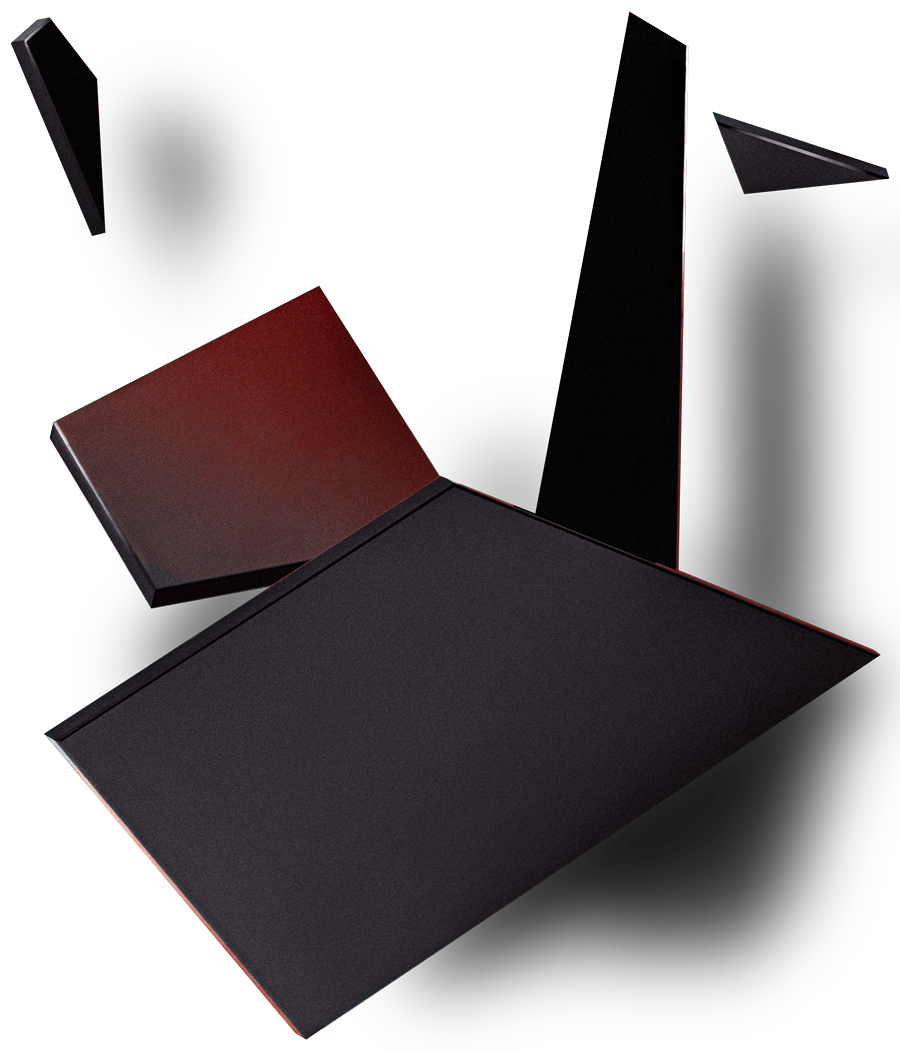
Location
Kepler’s Gardens
Altenbergerstr. 69
4040 Linz
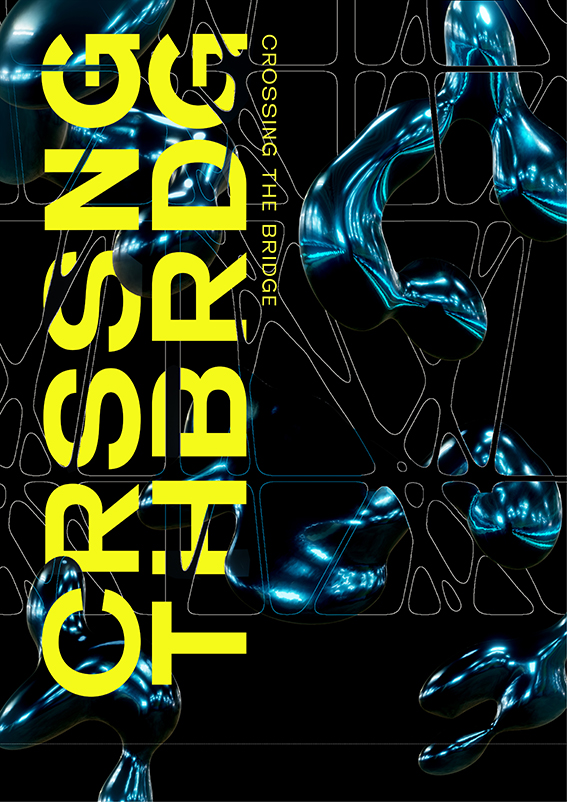
Peter Schloss (DE), Sebastian Sprenger (DE)
per aspera ad acta I
Per aspera ad acta I follows the footnotes of a branch of science seeking to explore emotion. The sculpture, a modified filing cabinet, presents a collection of visual output from experiments that sought to prove that emotions can be read from facial expressions and gestures. Early on, science played with the idea that certain facial expressions could be assigned to specific emotions. Today’s emotion research now contradicts these theories. So far, no system has identified clear features that measurably distinguish emotions on or in the body. This means that many politically highly relevant technologies, such as the use of surveillance technologies at national borders, are already based on false assumptions.
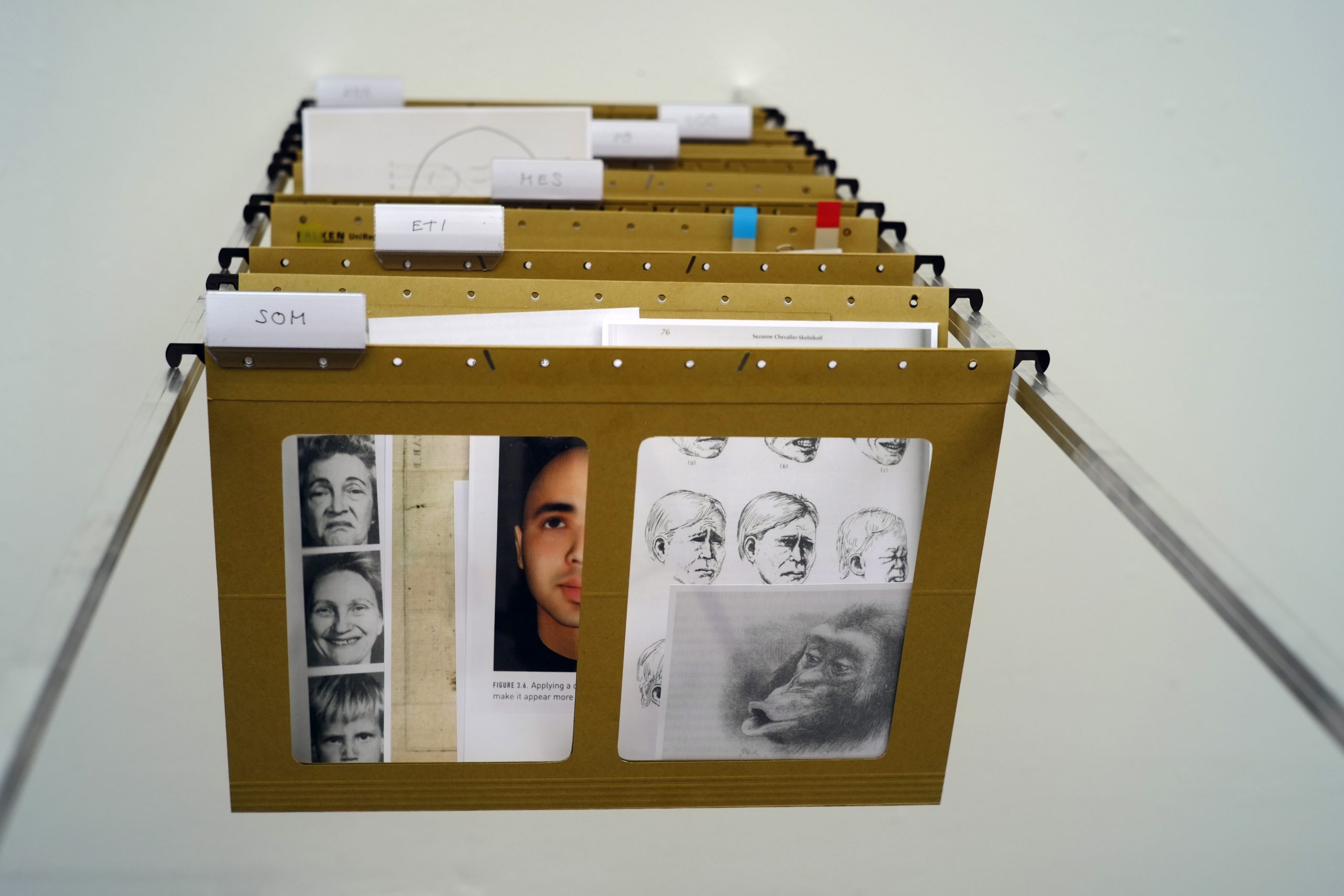
Kevin Blackistone (US)
Exquisite Corpus
When considering our bodies, we are most often concerned with the visual, surface components. Its functional interior organs are usually, at best, ignored. Becoming aware of them usually only happens when health concerns occur, so the lack of concern is most often a source of comfort. Over the past century, the medical industry has dramatically improved our ability to represent these elements through imagery that obscures the outside layers. There is no race in a torso x-ray, or gender in a cranial CT. This work shows how inwardly we are all identical, by merging layers of diverse bodily interiors into a 3D chimera of the human interior – an imaginary hybrid, devoid of the characteristics frequently considered definitive of our physical selves.
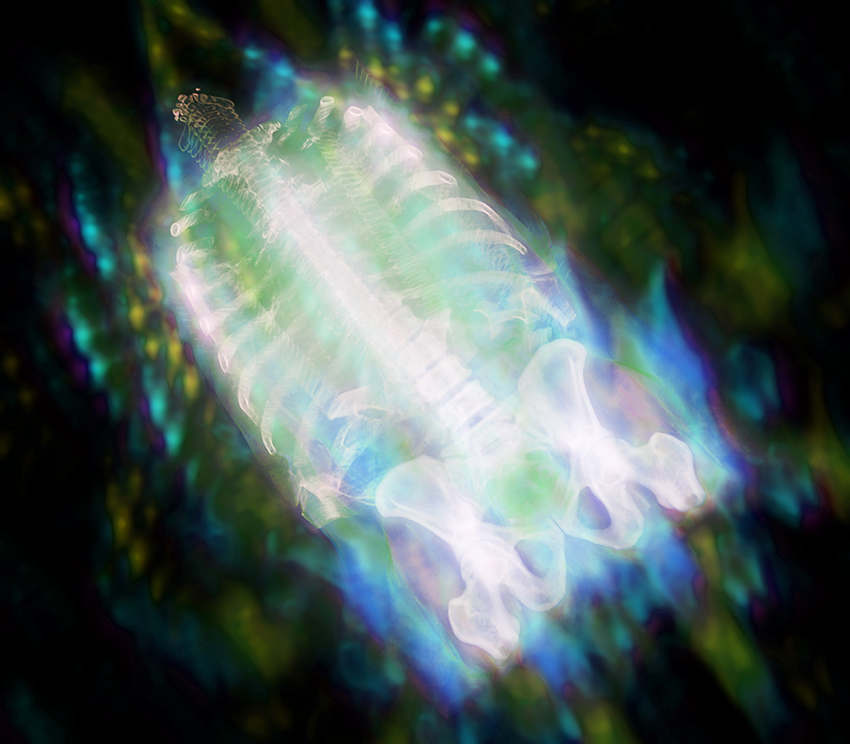
Maria Orciuoli (IT)
RZ Piscium is an Insatiable Eater of Worlds
Maria Orciuoli’s first video work discusses consumer culture and accelerationism from the point of view of the body and the mind. The installation consists of a video projection, gummy candies, and a customized sensor seat. The artist is shown ravenously eating a pile of waste: a binge eating ritual until the closing purging ceremony. Filtered through the artist’s experience of recovering from an eating disorder, the video questions society’s mainstream values as the protagonist finds herself oversaturated by conflicting impulses. Borrowing the title from the 2017 Astronomical Journal report on the RZ Piscium star dubbed *Eater of Worlds* for being surrounded by the wreckage of planets it has consumed, the video is a commentary on the current “capitalism hangover”.
Camera: Ilenia Orciuoli
Music: Associazione Terredaria
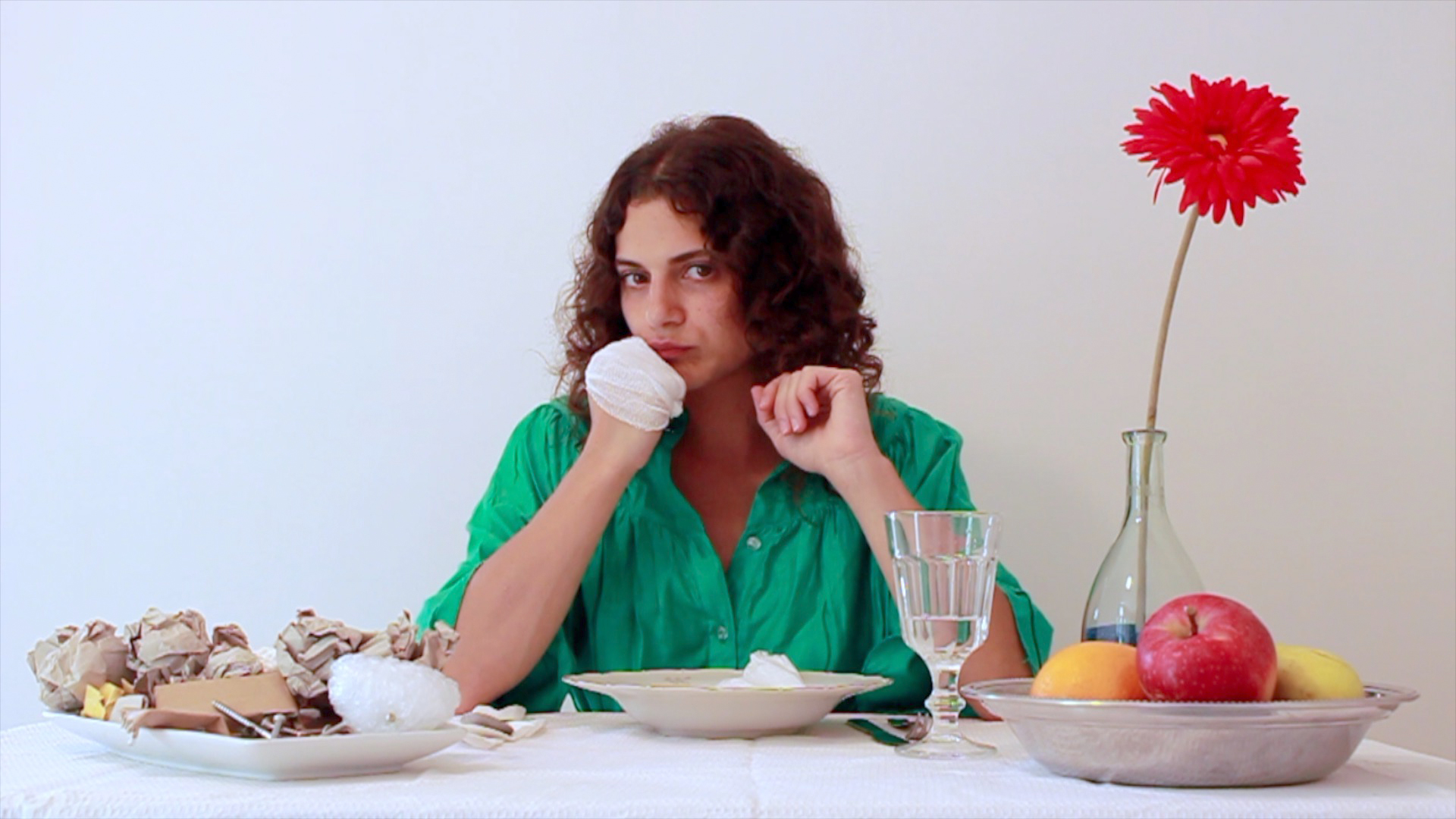
Indiara Di Benedetto (IT)
Future Memories of Deep Water
What are the changing conditions for archaeology in underwater ecosystems? Can challenges be predicted and solutions imagined using machine learning? With the passage of time, underwater artifacts are encrusted with coral, algae or other marine organisms. How do human activities and pollutions undermine these natural environments? What will our underwater heritage be like in the future? The project explores how algorithms can be used for predicting new entanglements between underwater artifacts and the changing environment where they are discovered. Built upon experimental speculation, Future Memories of Deep Water calls for the protection of threatened marine ecosystems and aims to create awareness and encourage preservation of cultural heritage.
Artistic research and visual design: Indiara Di Benedetto
Sculpture design & production: Giulia Berrettoni
Project mentorship: Alexia Achilleos
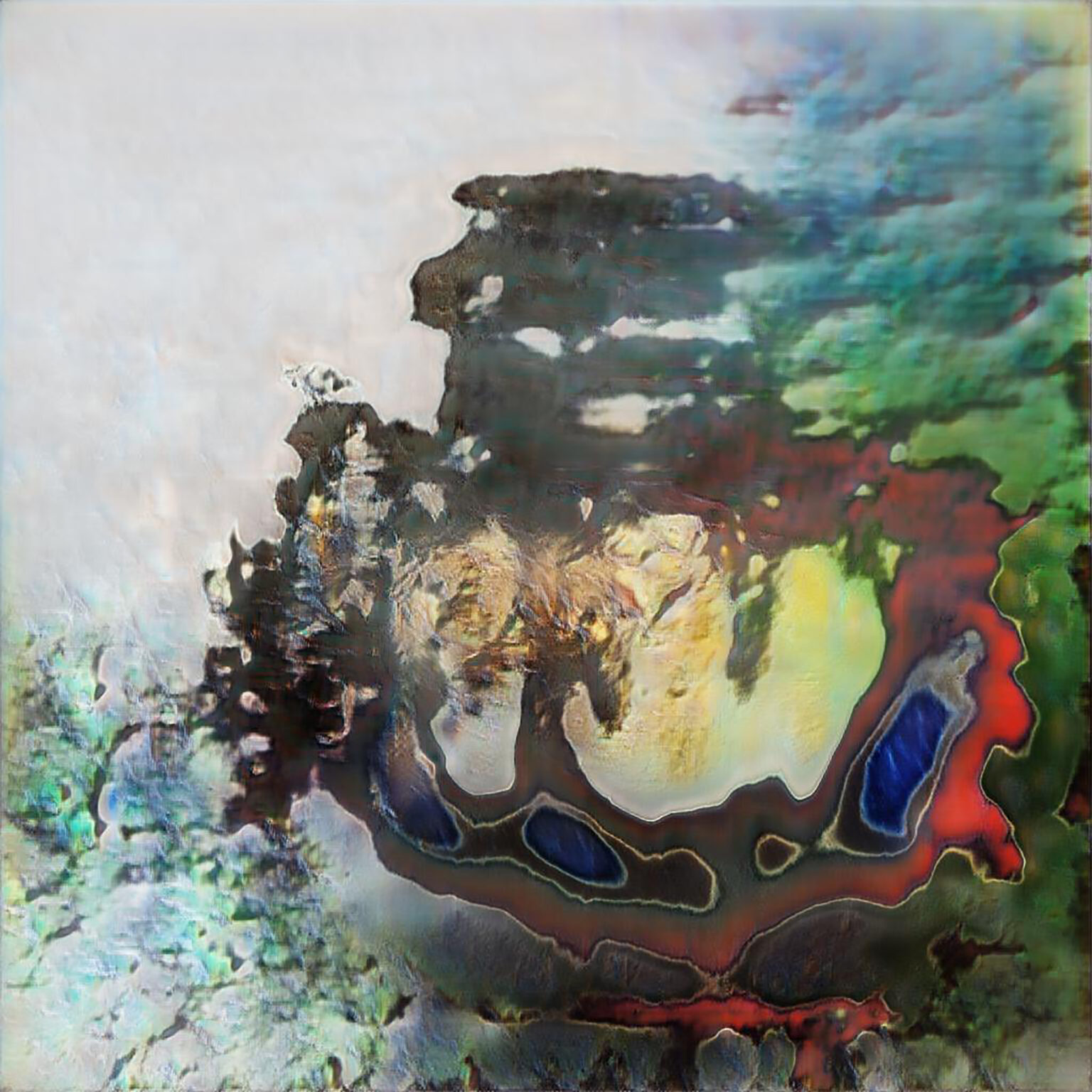
Sara Koniarek (AT)
DeepFakeSonder
“Sonder”, a term coined by John König in 2012, describes the realization that every passer-by has a life as complex as your own. By nature, we tend to perceive life to be centered around us. There are moments in our daily lives where we get closer to grasping the complexity of the networks connecting us. It can happen on the commute to work, overhearing someone’s conversation, or using social media apps that give a glimpse into other people’s lives for a small fraction of time. DeepFakeSonder takes fractions of real people’s conversations and, using AI, creates deep fake stories of everyday life. This project aims to recreate the feeling of “sonder” and the experience of hearing just fragments of someone else’s story without much context.

Baraba Jazbec (SI)
The Uncanny TV
The Uncanny TV is an interactive installation whereby browsing through TV channels the spectator is invited to discover the mystery of the ghost hidden inside the uncanny imagination of electronic media. The TV channels in the installation are built from AI-generated animation and video works. They offer a deeper investigation into the world of uncanniness. As Ernst Jentsch said: “If one wants to come closer to the essence of the uncanny, it is better not to ask what it is, but rather to investigate how the effective excitement of the uncanny arises in psychological terms, how the psychical conditions must be constituted so that the ‘uncanny’ sensation emerges.”
Technical support: Žan Rajšek
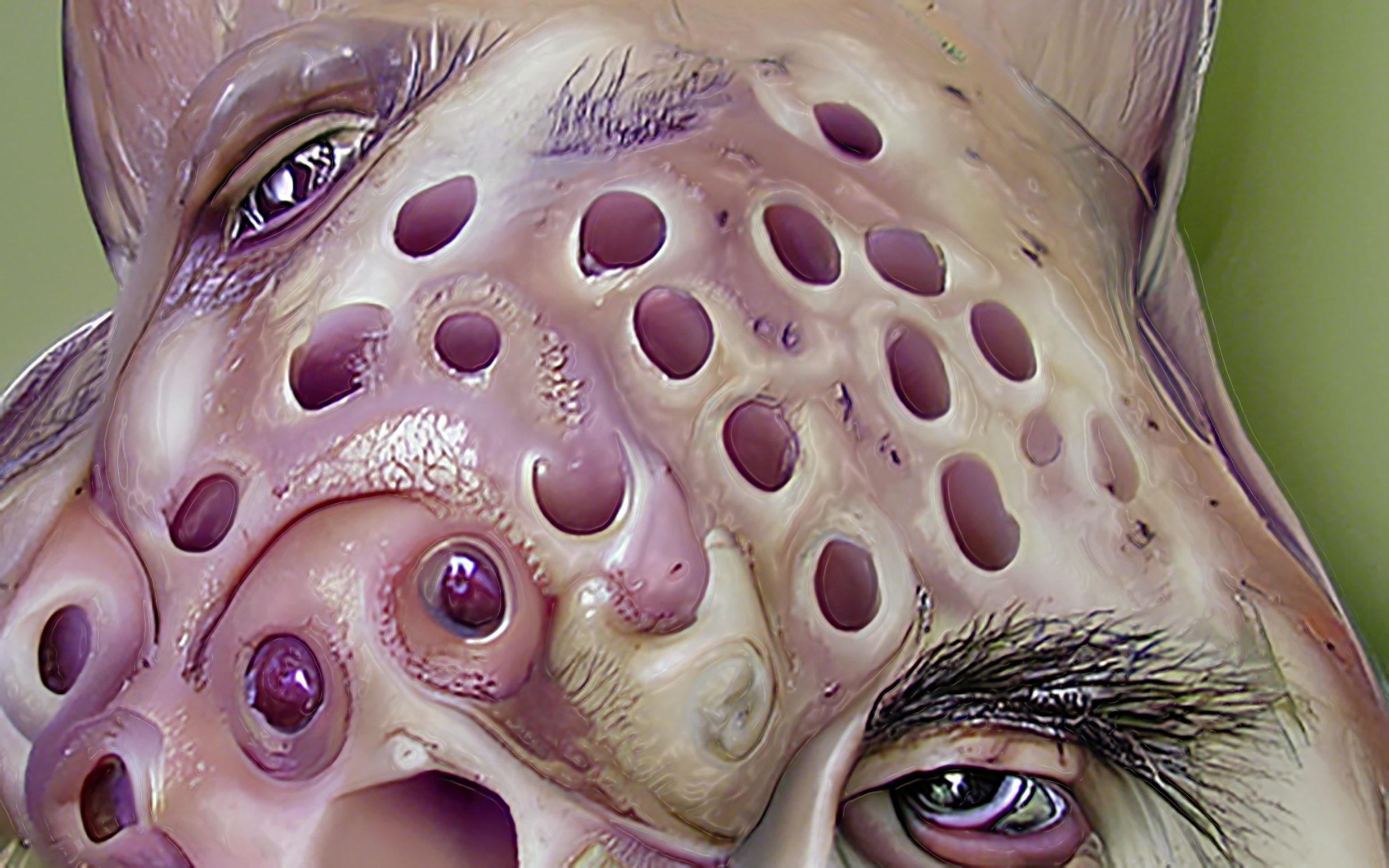
Jelena Mönch (DE)
Externalization
Have you ever struggled with intrusive thoughts? If yes, you are not alone. About 94% of people have them. They pop up in your head like thoughts from someone else and the more you try to ignore them, the more they dominate. But how would you feel if there was a way to confront them? The artwork deals with how we handle obsessive thoughts and highlights how common they are. Visitors can offer one of their intrusive thoughts as a kind of exhibit, by taking part in the interactive installation.
Technical Support: Jasper Vogel
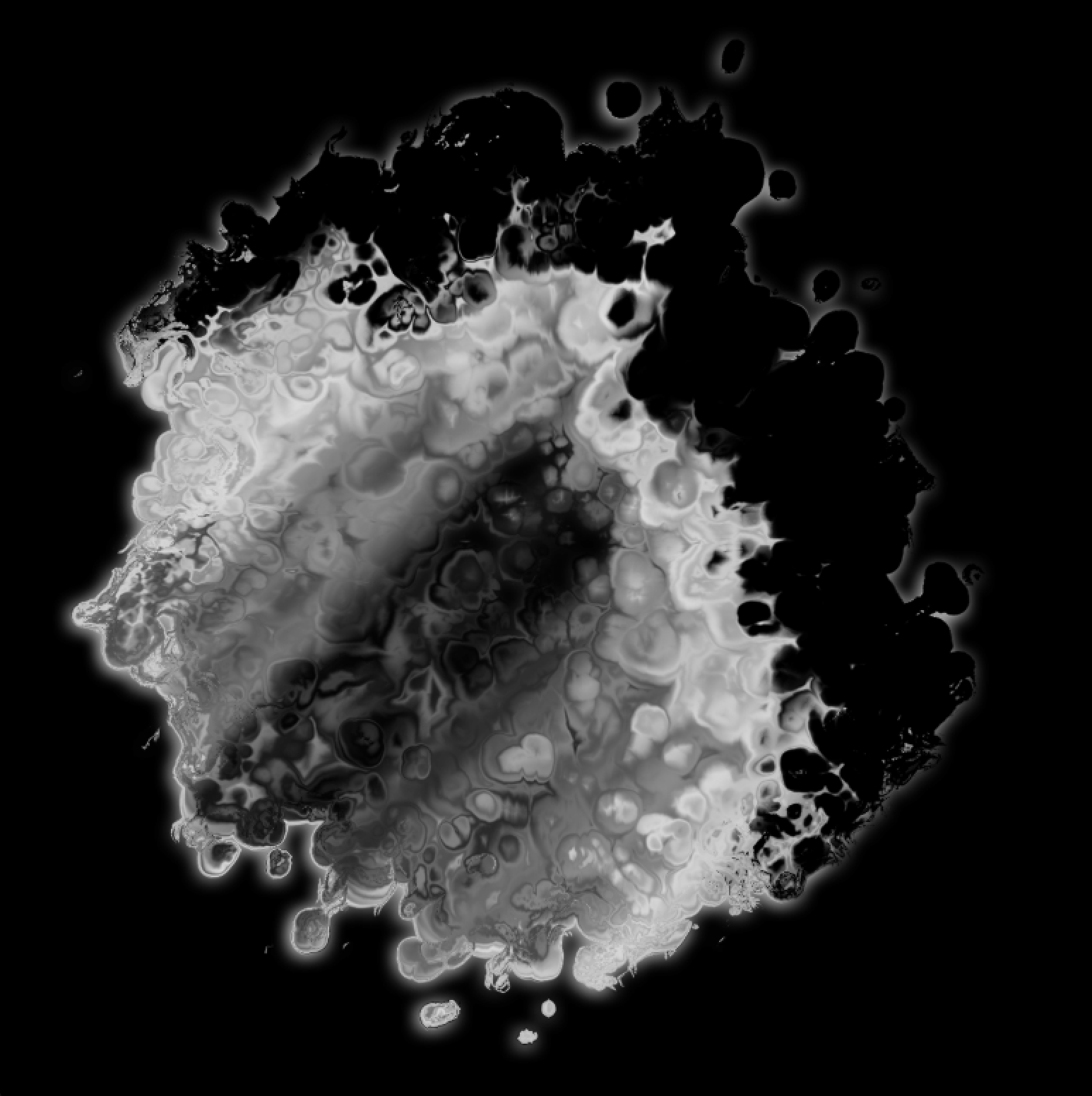
Pepe Reyes Caballero (ES)
He loved me/he loved me not
The artwork delves into speculative possible pasts, based on the personal photographic archive of a relationship and song lyrics that are transformed into new pixel compositions by AI. An interactive daisy allows viewers to pluck its petals one by one, generating new images to be displayed. The piece is completed with the printing of some of the photos used to generate the speculative images and an essay-style video on the construction of love, reality and the process of image reading. The action of plucking the daisy comes from the historical game to find out whether someone loved you or not. Here, we search for answers in an actual queer relationship, to understand the social construction of love and the cyborg condition of memory.
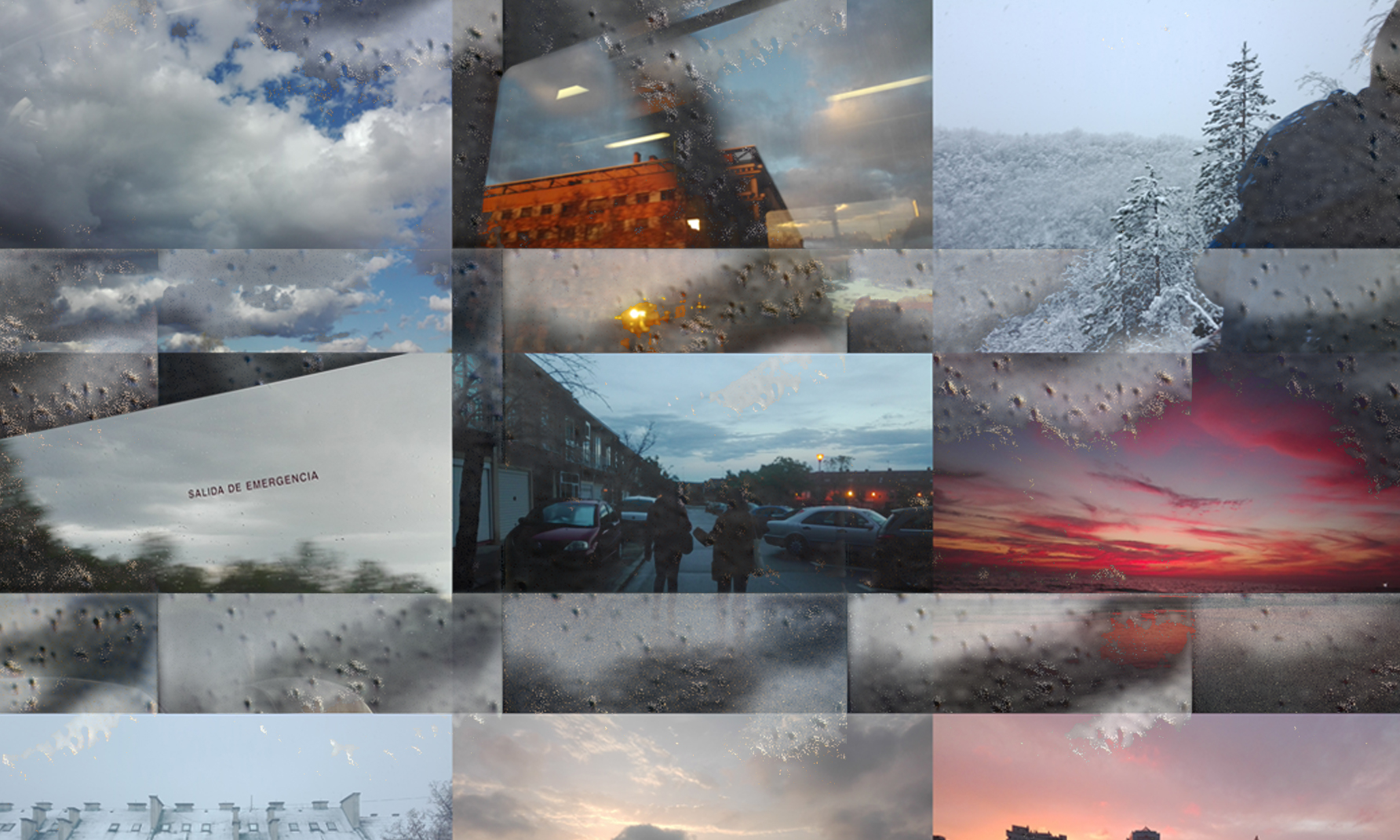
Daniel Fischer (AT)
Spectral Surrounding – live radio frequency light array
Spectral Surrounding is an interactive installation that visualizes radio frequencies. 700 LED lights, arranged in a grid above the visitors, react to different signals. They show live detected mobile radio signals as well as data communication such as Wi-Fi and Bluetooth transmissions from the devices that visitors bring along. How aware are we of the signals that our everyday devices emit? How much invisible communication is going on around us? A chaotic tangle of the most diverse signals permanently surrounds us. This data is translated to visual feedback that surrounds the spectator. This work aims to point out the extent to which we are constantly digitally active, and how our communication behavior inevitably leads to our being distracted by all kinds of information.
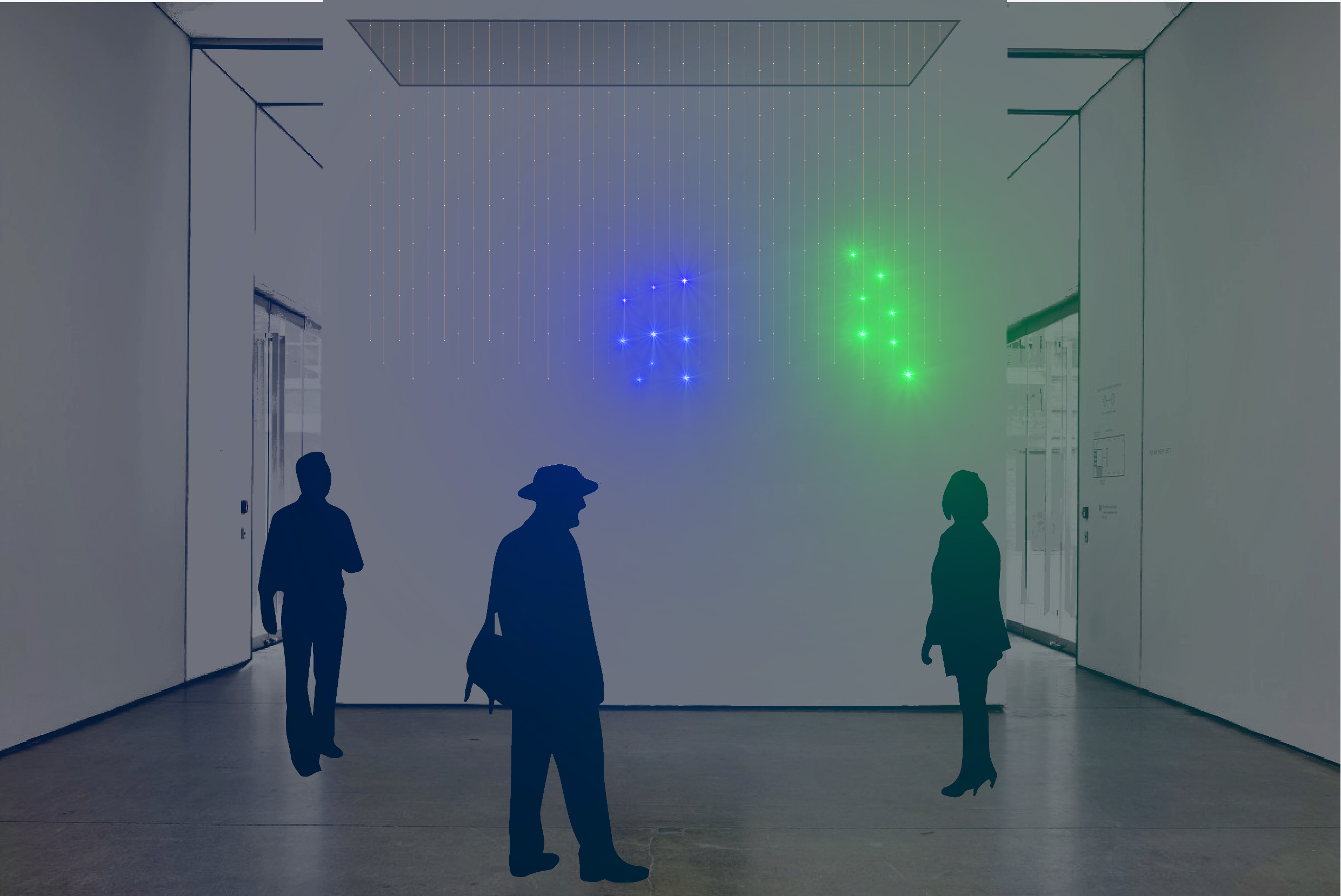
Kristina Tica (RS)
PROMPT: WAR STORIES
The project is developed using various pre-set text-to-image models, processing text prompt inputs. On the borderline between sensitive content and an easy slip into topics of violence, this project visualizes the depths of the subconscious of these models, excavating the influences of media and online information exchange. The quantified traces of reality and collective histories allow algorithms to generate content that recycles the past – building the spine of quasi-historical narratives – often obfuscated with prejudice and misinformation, along with the author’s personal bias. Generated outputs are presented inside a hypertext object – a tent that the audience can enter, as it were.

Noor Stenfert Kroese (NL)
FadingColours
FadingColours is an interactive installation intertwining living algae and almost real-time coral bleaching-data, creating an ecosystem of tangible data sculptures. Coral reefs are among the most vulnerable ecosystems on the planet. Our world is literally losing color with the bleaching and disappearance of our coral reefs. Through the technologies that are used to observe, care and research coral reefs, FadingColours invites you to enter the coral-algae narrative about our world in which the digital and the natural blend together. The result is a tangible representation of the algae and corals, allowing the viewer unique insight.
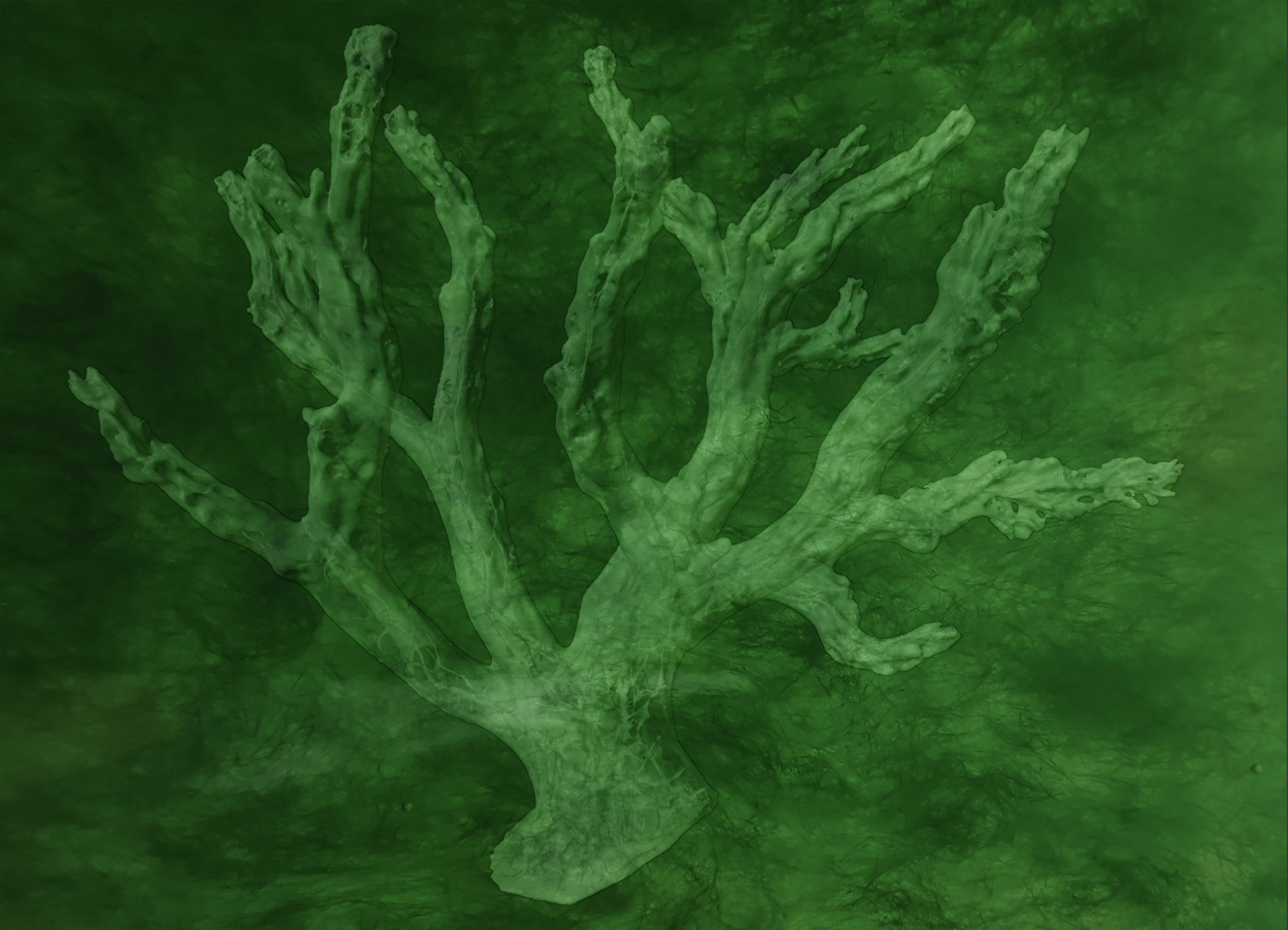
Viktoria Angyal (HU), Maria Dirneder (AT), Behiye Erdemir (TR), Daniel Fischer (AT), Dogus Karlik (TR), Marja Konstantinova (RU), Jelena Mönch (DE), Maria Orciuoli (IT) & Lina Pulido Barragán (CO)
Underwater Lilies
Underwater Lilies is the celebratory materialization that follows up on the collective research and exchange carried out by students of the Interface Cultures department around the topic of water memories. Imagine yourself as a river, static and yet in constant flux. A true milieu, always in the middle, where things merge into one another at their edges, stretching in two or more directions at once. Life begins axiomatically in, from and with that middle. Life ends in that middle too.
Curated by Fabricio Lamoncha (ES), in collaboration with Interface Cultures, Kunstuniversität Linz and Kunsthalle Linz.
Location: Kunsthalle Linz
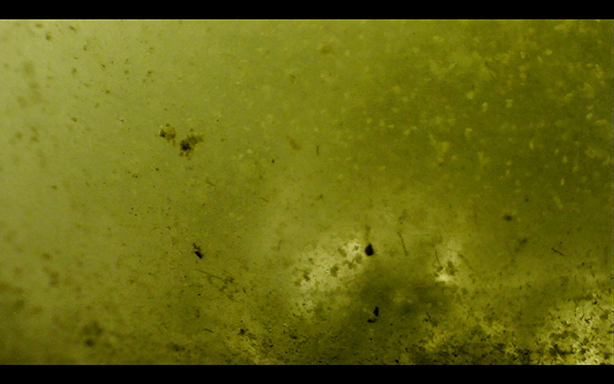
→performances
Alejandro Quiñones Roa (CO)
SOFT PRESS
Soft Press is a sound performance that atomizes modified percussion instruments by means of live coding and live audio processing. By merging robot-based instruments, programming, and improvisation, the work aims to generate a sound ecosystem, where sound phenomena are always unexpected and fluctuating. During the performance, a cymbal and a snare drum react to the live coding software Super Collider, generating an electronic music composition.
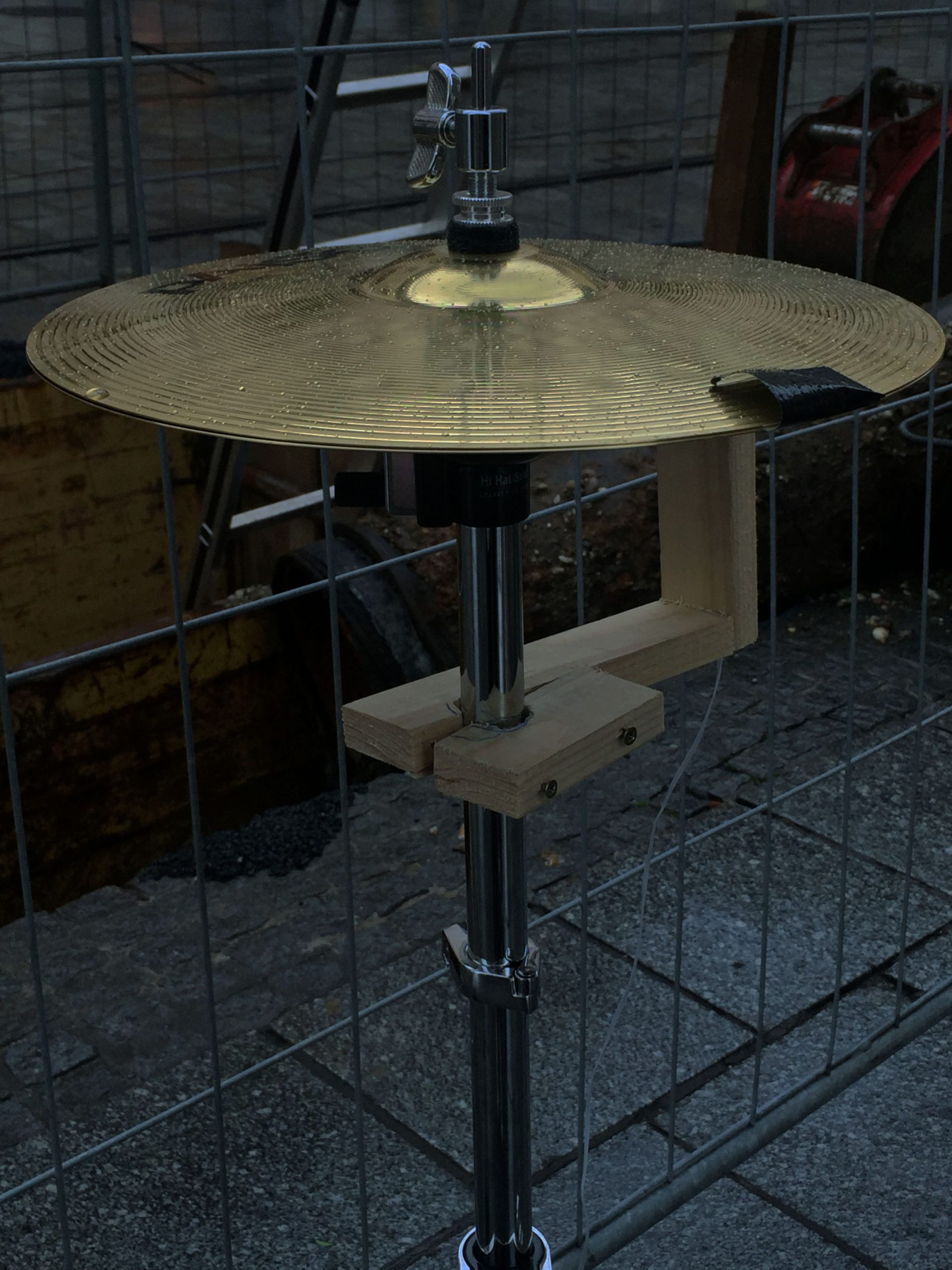
Chris Ziegler (D), Lina Pulido Barragán (CO), Dogus Karlik (TR), Katherine Romero (CO), Aizhan Saganayeva (KZ), Behiye Erdemir (TR), Maria Dirneder (AT) and Tomomi Watanabe (JP)
MOVEMENT ROBOTICS
KunstUniversität Linz Workshop by Media Artist Chris Ziegler with Master Students from the Department Interface Cultures and Bruckner University / Dance Department, supported and hosted by REDSAPATA Tanzfabrik.
The workshop takes place in an interactive robotic stage of around 30 motorized LEDs, researching the relation of human physical motion in a relation to a mechanized environment. How can we make the user or audience experience more physical and participatory? The body of a dancer is connected to the environment and interacts both with the audience and the system. How does moving in a robotic stage transforms the orientation and relation to the human body? What is the experience being Immersed in a mechanical universe?
The performance that was being developed during the workshop will be shown on September 8th at 21:00, at Redsapata Tanzfabrik, Saal 1.
Participating Artists: Lina Pulido Barragán, Dogus Karlik, Katherine Romero, Aizhan Saganayeva, Behiye Erdemir, Maria Dirneder and Tomomi Watanabe
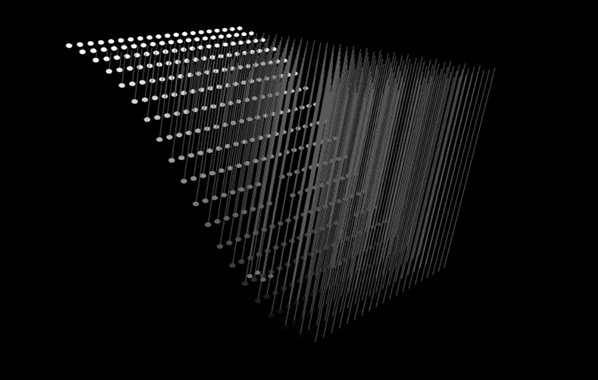
Daphne Xanthopoulou (GR)
Stones are Angels
In our highly networked world, big tech dominates our daily lives and interferes with them, too, ethically, in ways that are opaque. What might we hear if we listen to the ghosts in our machines? What kind of stories would they have to tell us? Stones are Angels is a participatory performance that draws attention to the mineral substratum of our ethereal technologies, by augmenting our encounters with our electronic companions. Using our intra-actions as means for collective composition, we speculate on the language of stones, the unity of spiritual and material life, and our ability to communicate in anthropomorphic ways with the mineral.
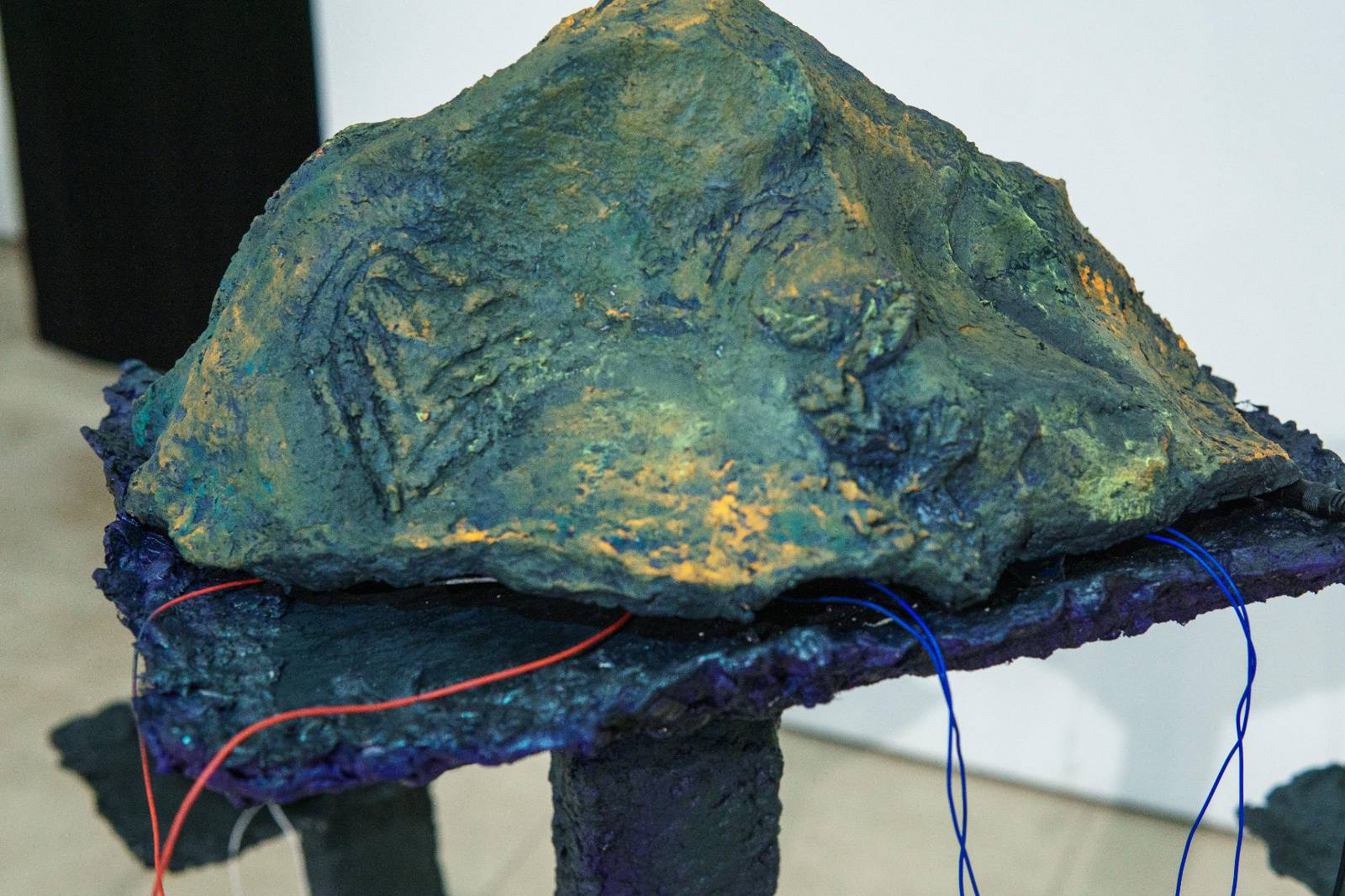
Vahid Qaderi (IR), Razieh Kooshki (IR)
Cluster
Cluster is an audio-visual collaboration between composer and musician Vahid Qaderi and visual artist Razieh Kooshki. Over several years, the two artists developed and performed audio-visual performances. The music combines the genres of noise, ambient, IDM and Dark techno alongside recorded sounds of the environment and is accompanied by sound reactive and generative abstract/surreal visuals. The complex real-time visuals are mostly made up of basic 2D and 3D. This performance is a continuation of the Vivid Q series, the first part of which was performed in Tehran in 2018. By creating a continuous and at the same time changing atmosphere, the artists endeavor to trigger the audience’s imagination to create their own stories out of the abstract sounds and images.
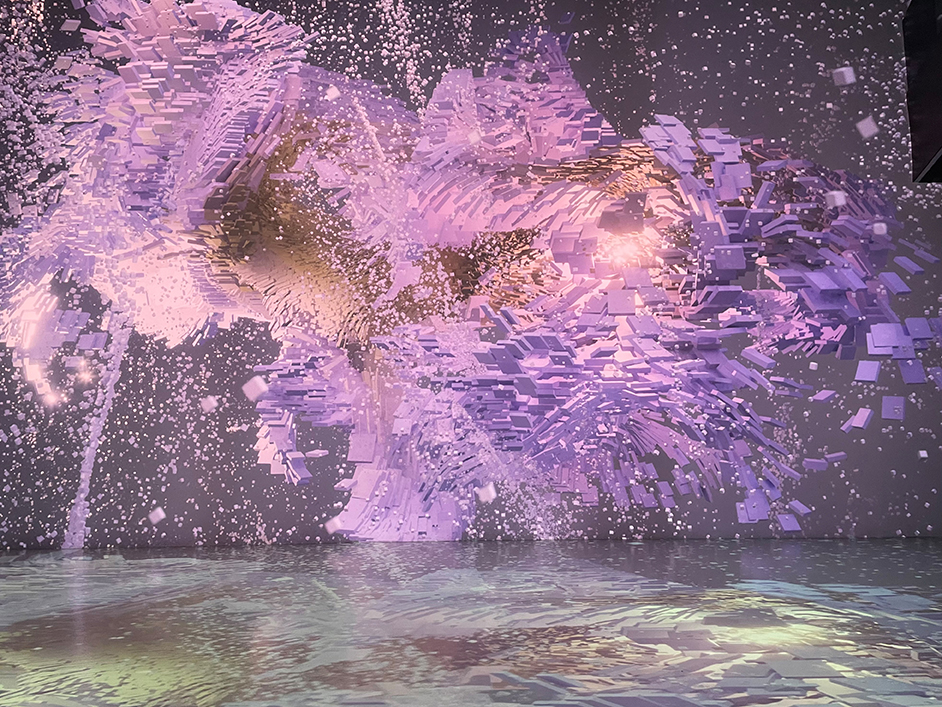
Kathrine Hardman (US)
Hairy Situation Vol. 3: Woven Memories
The third in her series of hair-based instruments, Hairy Situation Vol. 3: Woven Memories is a music synthesizer, an audio scrapbook, and an electronic tapestry of human hair. The work serves as a reflection of the last three years (2019–2022), chronicling all the moments seen by the hair which had grown during that period. Presented as a collaborative performance, the artist and audience members play the instrument by combing the woven tapestry with a specially designed hairbrush. Using capacitive sensors, the instrument can sense the way in which the user brushes the woven hair. Gentle movements translate into sounds of peaceful memories, like a summer breeze, a lover’s heartbeat, and sweet nothings. Harsh brushing triggers likewise harsh sounds.
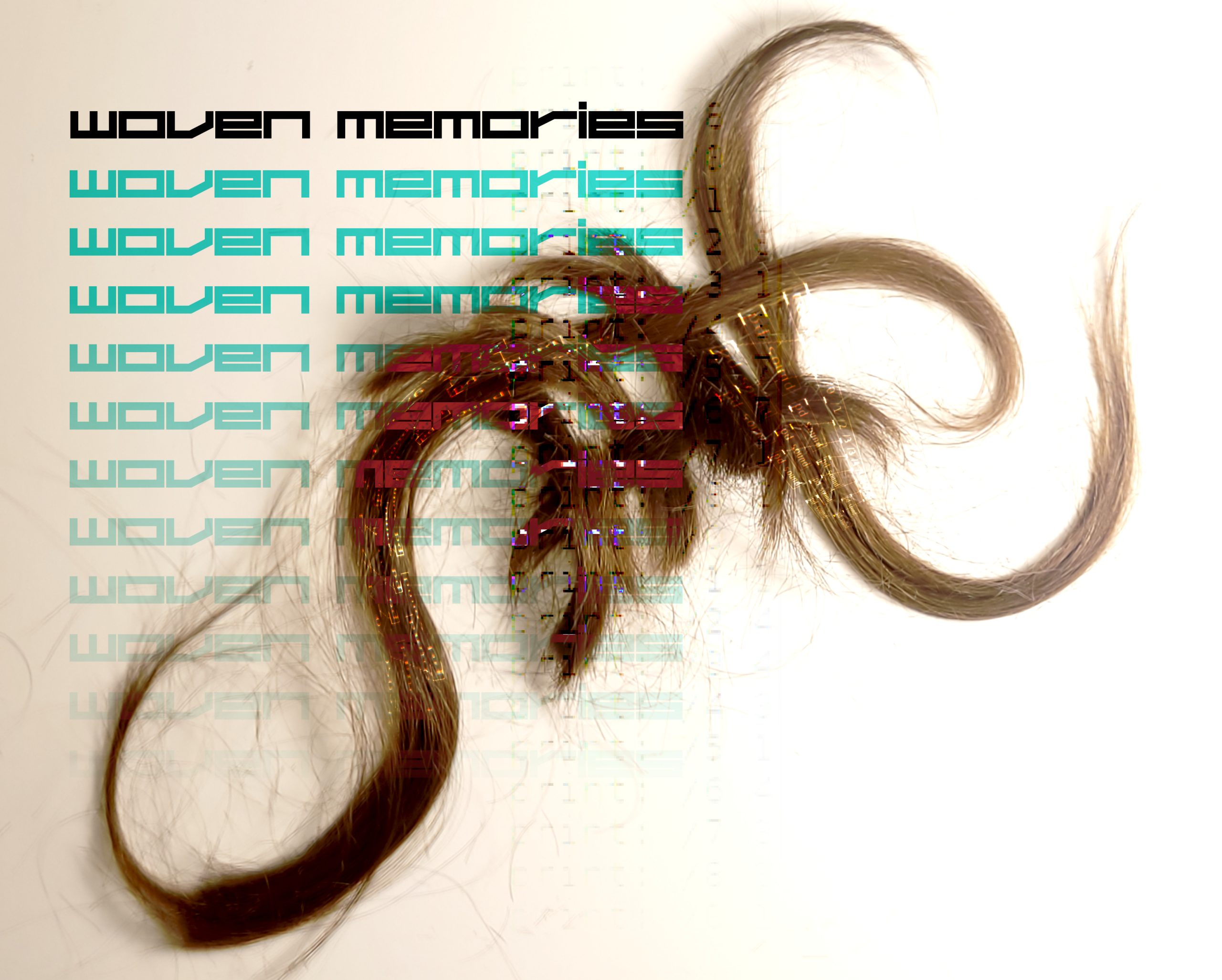
Katherine Romero M. (CO)
The Checkpoint
The Checkpoint lets users interact with the artist’s family’s farm archive in Cumaribo, Vichada, Colombia. The archive was created in the Open Mountain art laboratory, dealing with Colombian violence and how it is expressed through family memories and territory. The war in Colombia has been long, the government has failed to recognize it and it is hard for the victims of violence to find answers. *The Checkpoint*, while not a story itself, is an attempt to build the experience of a story. The users create a different narrative every time they interact. In that sense, the artwork recovers this lost truth, not as forensic or investigative reconstruction, but a collection of memories that are related to the experience of living in a place of conflict.
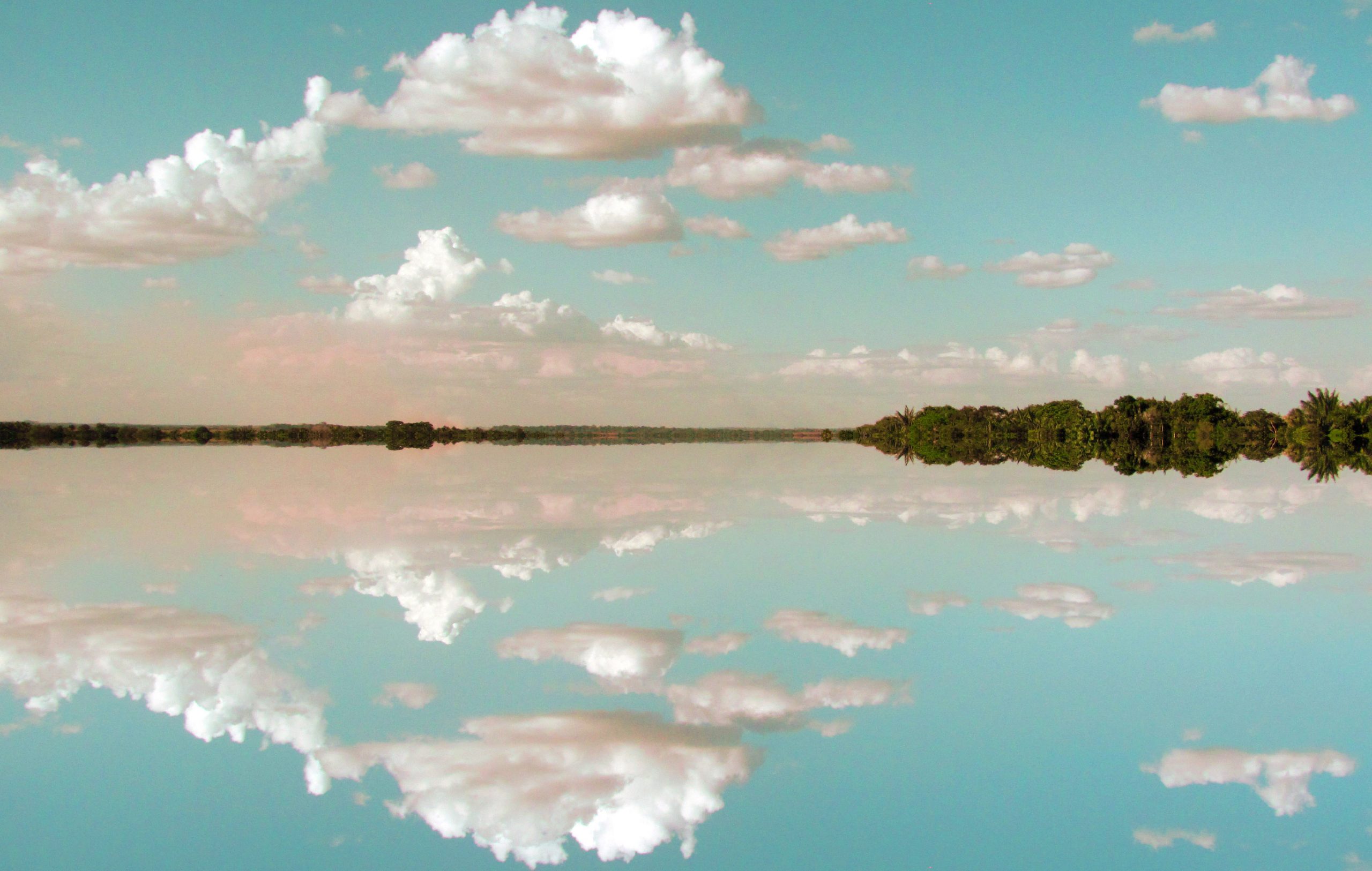
Smirna Kulenovic (BA)
DANU
We are all Bodies of Water: Re-enchanting the Vulva, re-spiriting the Danube, inviting the magic back into our oceanic beginnings, we embody our ancestral river myths through our common microbes, dancing.
DANU is a result of a transdisciplinary workshop by the artist Smirna Kulenovic, materialized as a collaboration between MA students at the Dance Institute (ABPU) and Interface Cultures Department (KUNI Linz). During the Summer Semester 2022, each student was guided through their personal and shared artistic research in hydrocommons.
Artists: Alejandra Benet Garcia, Laura Gagliardi, Lucia Mauri, Ariathney Coyne, Alessia Rizzi, Lina Pulido Barragán, Sara Koniarek, Maria Dirneder, Felix Chang, Dafni Xantholopolou
Artistic Researchers / Advisors: Smirna Kulenovic, Damian Cortes-Alberti, Julia Moser
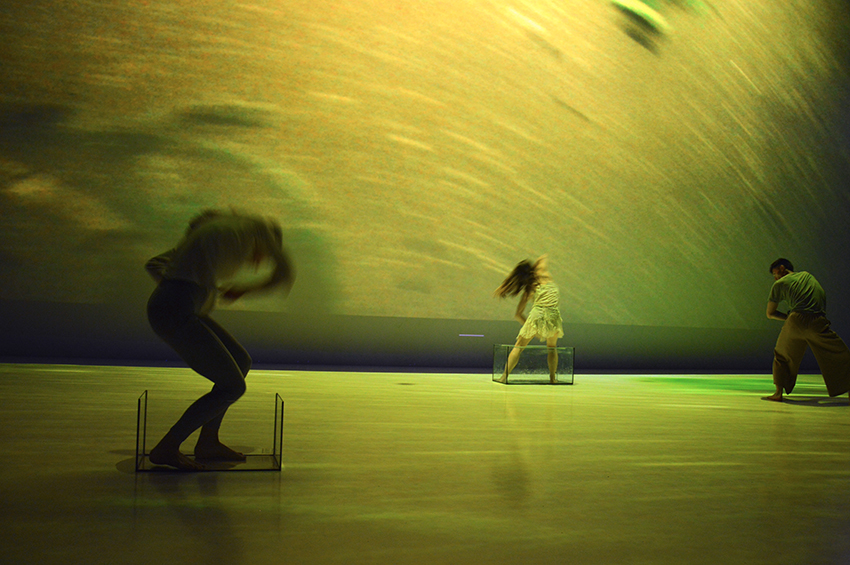
→outdoor projects
Maria Dirneder (AT)
The Intangible Bubbles – Calling for Aphrodite
“The wind god Zephyr brought Aphrodite, the foam-born goddess of love, upon a seashell in the ocean with his breath.” The installation measures audience members’ breath with sensors, its movement visualized and transferred into water. In the water the intangible air receives a body, becoming visible with bubbles. Audience members are touched by breathing as visceral as lungs. A deep breath creates the experience of profundity from within. There is an inevitable exchange between lungs and atmosphere, the air we breathe directly that is affected by climatic factors. Creating a perceptible and visible interaction between our own breathing and the environment makes possible a connection with the intangible.
Technical assistance: Daniel Fischer

Maria Konstantinova (RU)
Soup Kitchen – A Recipe of One Bright Day
The awakening scent of freshly cut grass, lingering hugs with a pillow, a cup of tea … What were the ingredients of your morning? Soup Kitchen is a playful experience created as an attempt to redefine the values of life in a ludic form.
The user is invited to take part in the game and share one day of the character’s life. With the help of a tangible interface, the player defines the events of the story, creating a unique narrative. The work encourages visitors to pause briefly and reflect on their average day. By separating 24 hours from the abstract concept of a lifetime, our perspective on our needs and goals may be redefined.
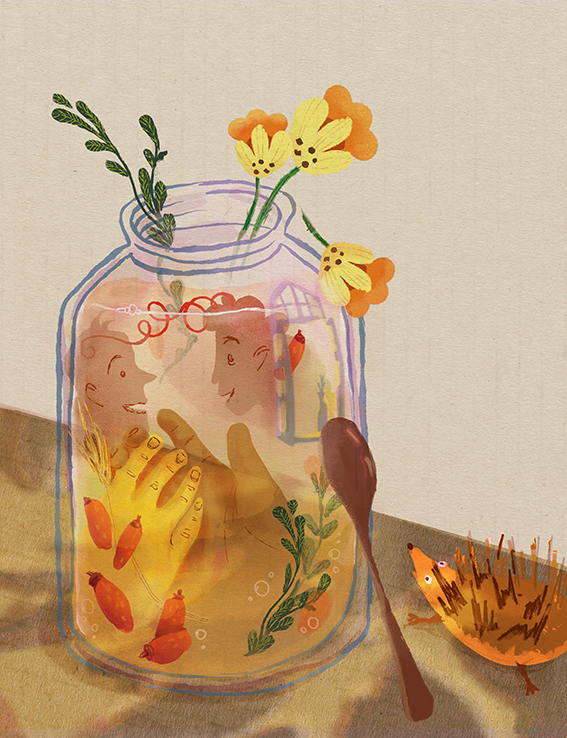
Lina Alejandra Pulido Barragán (CO)
Plántula
As humans we have a limited spectrum of perception, that of our senses. Efforts to perceive other realities fail. When analyzing the life of other living organisms such as plants, the artist developed the idea that their ‘brain’ is in their roots. If we want to approach what she calls ‘plant perception’, we have to reverse the position of our body and bury our head in the ground, going through an immersive experience in the vegetable darkness. Plántula is an in-situ piece in which viewers bury their heads in an upside-down position. The viewer is immersed in an organic scenario of sound and sensitive amplification in the dark.
In collaboration with the architect Andrés Sandoval

→workshop
Vanessa V(ozzo) (IT)
Photosynthetic You
Photosynthetic You explores fundamental ethical questions related to the renewed debate on genetics, reaching as far as the hypothesis of being able to exchange our human genes with those of other species using innovative systems such as CRISPR/Cas. What if we can all decide, paradoxically and in an extreme, mass democratic act, to become thin and motionless like leaves, energetically self-sufficient like plants, feeding only on light and solar power? Starting from scientific and artistic suggestions around the topic of “becoming plant-like” and using keywords like photosynthesis, autotrophy and hybridization, Vanessa V proposes an open discussion between science and art. The workshop delves deeper into the ethical questions that emerged from the artist’s installation Photosynthetic Me.
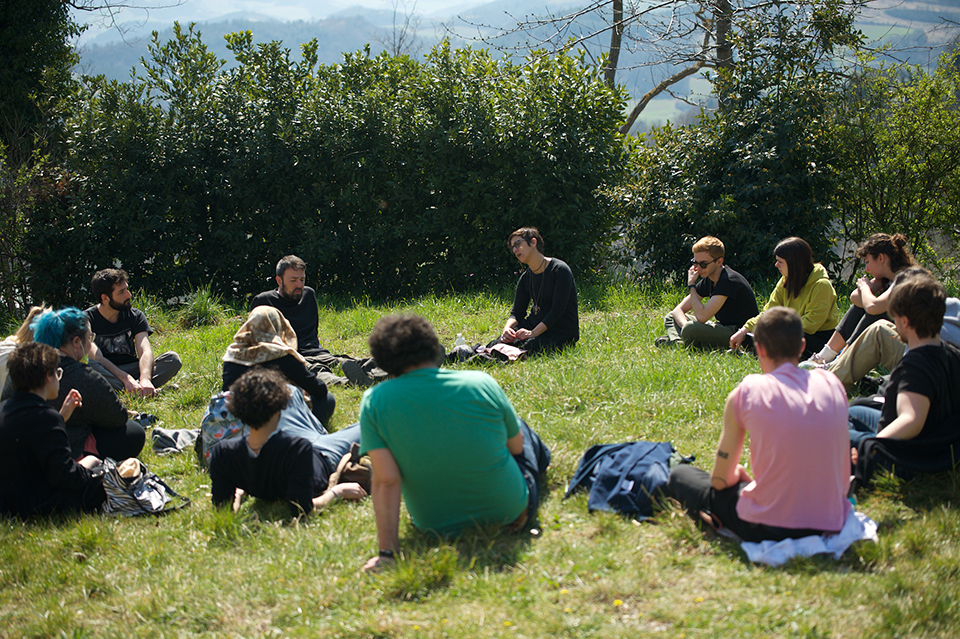
→TALK
LEONARDO LASER LINZ
DIE GARTENLAUBE VOL.III, DANUBE SONGS 2
“There are still songs to sing beyond mankind.”
(Paul Celan)
We are delighted once again for the opportunity to host our Leonardo Laser Talk at the Ars Electronica Festival 2022, with the support of the University of Art and Design Linz and the Interface Cultures Department. In September 2021, Linz joined the Leonardo Art & Science Evening Rendezvous (LASER) network, an international program that brings together artists, scientists, academics, and the general public, to share their work and inspire each other through engaging presentations, performances, and discussions. The mission of these gatherings is to foster unusual encounters and dialogues, allowing its participants to challenge their worlds and practices while promoting pluralism and interdisciplinarity. Providing a space to make new friends and build new alliances, we aim to set new agendas and new horizons. We do it out of love and curiosity.
In this third edition we continue our Gartenlaube series with a second panel around water. Through different narratives such as bodies of water, water fluidity and water love, water ecologies and water pollution, water management, our guests will present their personal work as well as their methods, their stories and maybe even their songs. We are very interested in understanding how their work—whether artistic or scientific—has shaped their relationship with this sensitive force of nature. With a special focus on the Danube River, we will examine the river as an artery through which communication and exchanges, not only human but also interspecies, were established long before humans began to navigate, cultivate and establish their settlements along it.
